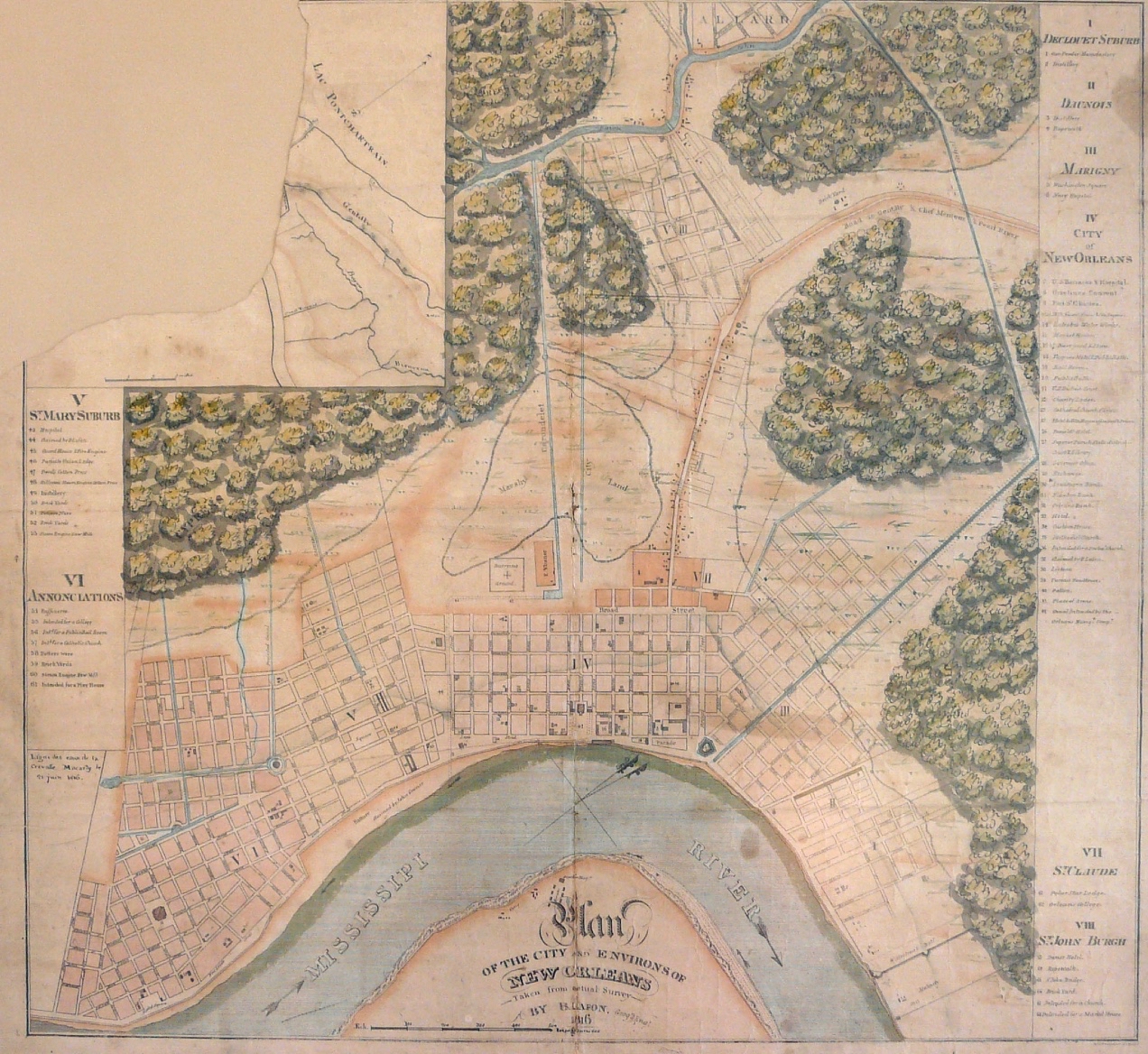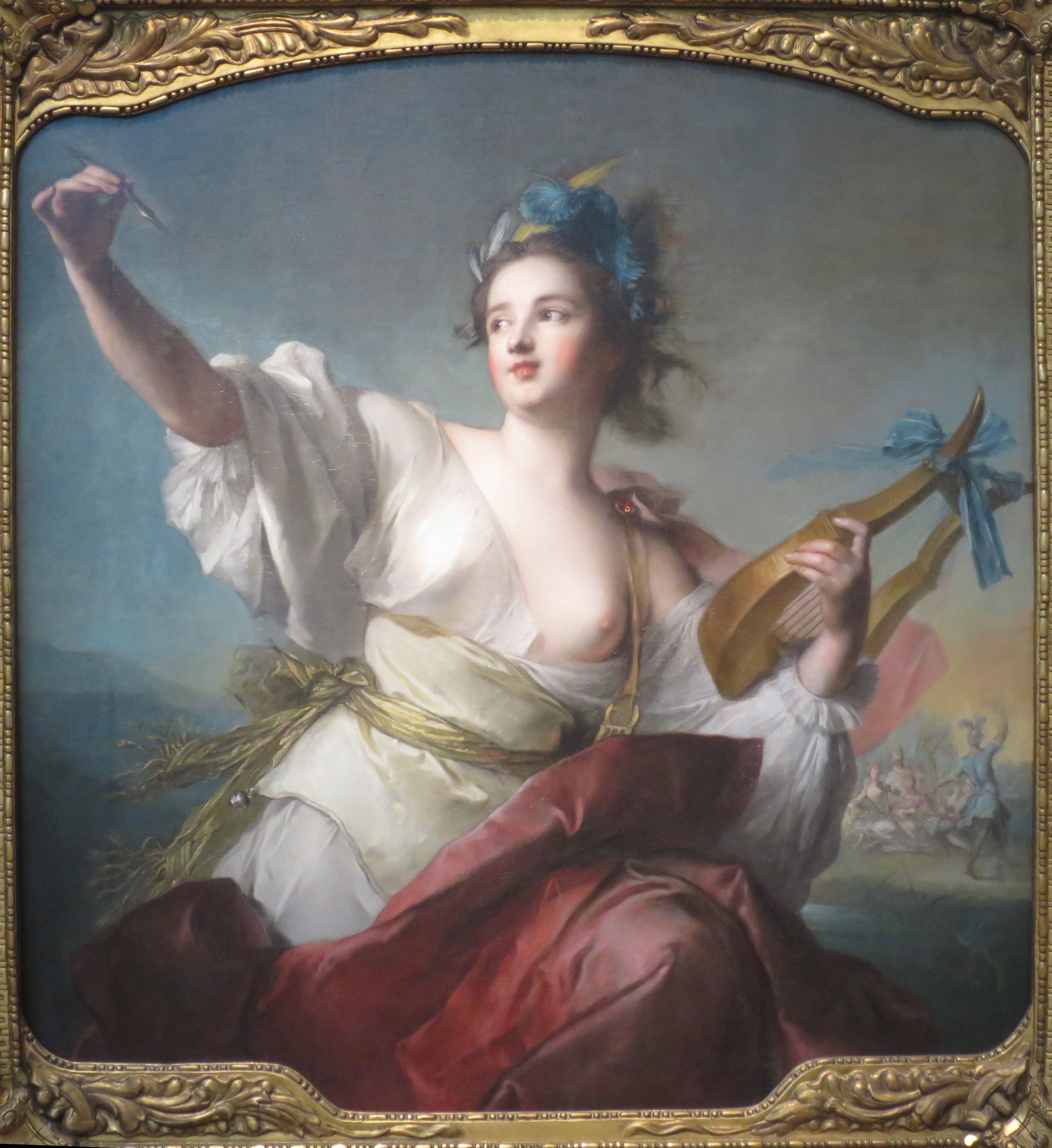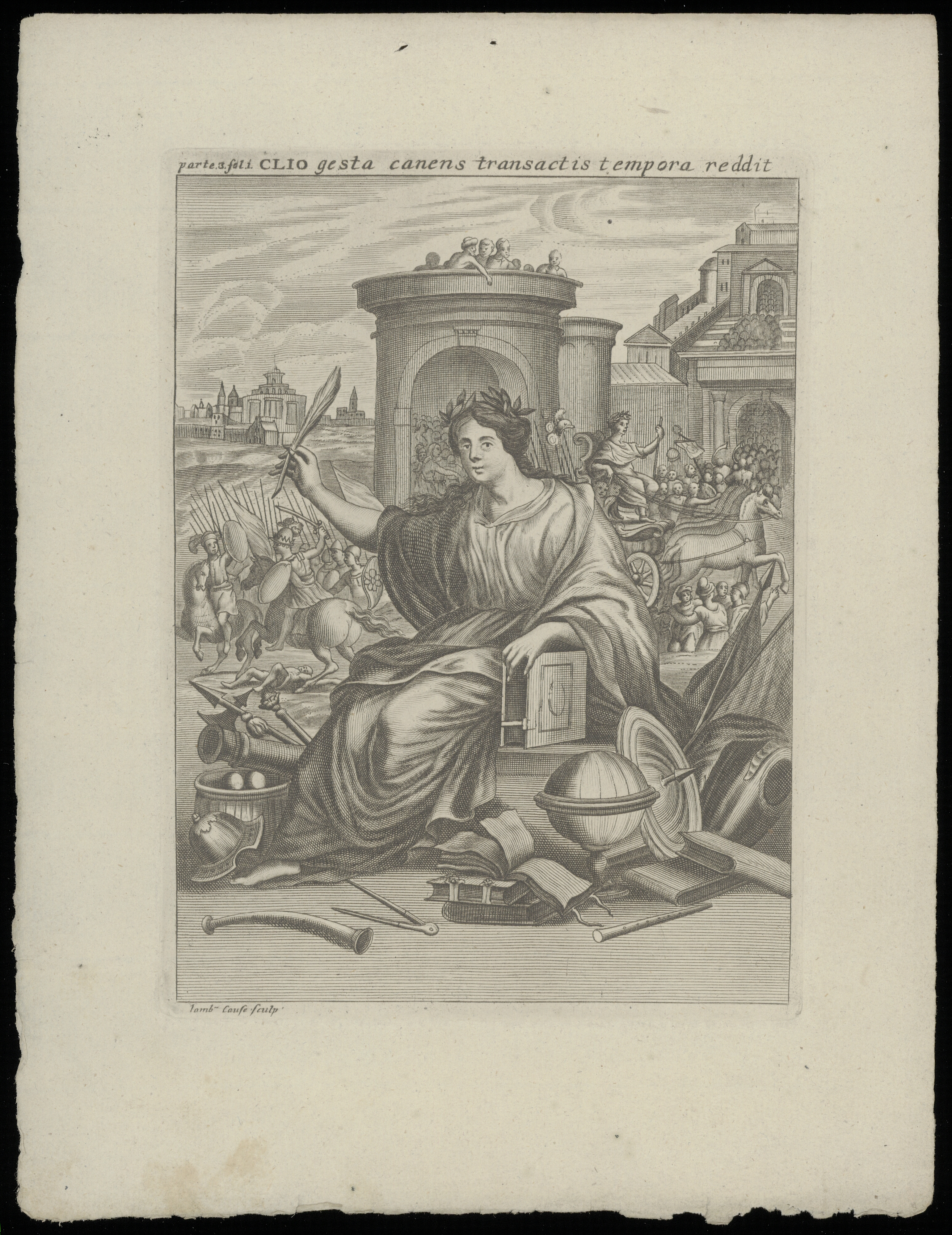|
Barthélemy Lafon
Barthélemy Lafon (1769–1820) was a notable Louisiana Creole people, Creole architect, engineer, city planner, and Surveying, surveyor in New Orleans, Louisiana. He appears to have had a double life, as a respectable architect, engineer, and citizen; but also as a privateer, smuggler, and pirate. In later life his association with piracy, specifically with Jean Lafitte and Pierre Lafitte became public knowledge. Life and career Lafon was born in Villepinte, Aude, Villepinte, France, and traveled to New Orleans around 1790. He designed several public buildings, including public baths (plans submitted in 1797, but the bath house was never built) and a lighthouse, and numerous private homes (including the Benachi cotton brokers' house and the Vincent Rillieux house). After the Louisiana Purchase in 1803, with the Mississippi River open to free trade, land owners just upriver from the French Quarter, Vieux Carré realized that the old quarter dominated by the Spanish and French coul ... [...More Info...] [...Related Items...] OR: [Wikipedia] [Google] [Baidu] |
Lafon Map New Orleans 1816
Lafon or LaFon may refer to: Places * Lafon County, an administrative area in South Sudan * Lafon, South Sudan, the headquarters of Lafon County People with the surname * Barthelemy Lafon (1769–1820), architect, engineer, city planner and surveyor in late colonial-period New Orleans * Chantal Lafon (born 1965), French rower * Jacky Lafon, an actress * Jean-Jacques Lafon (born 1955), French singer-songwriter (one-hit wonder ) and painter *Marie-Hélène Lafon (born 1962), French educator and writer * Mathieu Lafon (born 1984). French professional football player. * Pauline LaFon Gore, mother of former United States Vice President Al Gore * Philip Lafond, Phil Lafon, Canadian pro wrestler * Thomy Lafon (1810–1893), Creole business man, philanthropist and human rights activist * William M. LaFon, President of the West Virginia Senate from 1939 to 1941 See also * Lafond * Laffon, a surname * Laffoon, a surname {{disambiguation, geo, surname French-language surnames ... [...More Info...] [...Related Items...] OR: [Wikipedia] [Google] [Baidu] |
Lower Garden District, New Orleans
Lower Garden District is a neighborhood of the city of New Orleans. A subdistrict of the Central City/Garden District Area, its boundaries as defined by the New Orleans City Planning Commission are: St. Charles Avenue, Felicity, Prytania, Thalia, Magazine, and Julia Streets to the north; the New Orleans Morial Convention Center, Crescent City Connection, and Mississippi River to the east; Felicity Street, Magazine Street, Constance Street, Jackson Avenue, Chippewa Street, Soraparu Street, and St. Thomas Street to the south; and 1st Street to the west. Geography Lower Garden District is located at and has an elevation of . According to the United States Census Bureau, the district has a total area of , of which is land and (18.1%) of which is water. It includes the Papillon Apartments, an apartment complex operated by Tulane University for graduate students and their families. Adjacent neighborhoods * Central Business District (north) * Mississippi River (east) * St. Thomas ... [...More Info...] [...Related Items...] OR: [Wikipedia] [Google] [Baidu] |
Urania
Urania ( ; grc, , Ouranía; modern Greek shortened name ''Ránia''; meaning "heavenly" or "of heaven") was, in Greek mythology, the muse of astronomy, and in later times, of Christian poetry. Urania is the goddess of astronomy and stars, her attributes being the globe and compass. The muse ''Urania'' is sometimes confounded with ''Aphrodite Urania'' ("heavenly Aphrodite") because of their similar name. Family Urania was the daughter of Zeus by Mnemosyne and also a great granddaughter of Uranus. Some accounts list her as the mother of the musician Linus by Apollo or Hermes or Amphimarus, son of Poseidon. Hymenaeus is also said to have been a son of Urania. Function and representation Urania is often associated with Universal Love. Sometimes identified as the eldest of the divine sisters, Urania inherited Zeus' majesty and power and the beauty and grace of her mother Mnemosyne. Urania dresses in a cloak embroidered with stars and keeps her eyes and attention focused ... [...More Info...] [...Related Items...] OR: [Wikipedia] [Google] [Baidu] |
Polyhymnia
Polyhymnia (; el, Πολυύμνια, lit=the one of many hymns), alternatively Polymnia (Πολύμνια), was, in Greek mythology, the Muse of sacred poetry, sacred hymn, dance and eloquence, as well as agriculture and pantomime. Etymology Polyhymnia name comes from the Greek words "poly", meaning "many", and "hymnos", which means "praise". Appearance Polymnia is depicted as very serious, pensive and meditative, and often holding a finger to her mouth, dressed in a long cloak and veil and resting her elbow on a pillar. Polyhymnia is also sometimes credited as being the Muse of geometry and meditation. In ''Bibliotheca historica'', Diodorus Siculus wrote, "Polyhymnia, because by her great (polle) praises (humnesis) she brings distinction to writers whose works have won for them immortal fame...". Family As one of the Muses, Polyhymnia was the daughter of Zeus and the Titaness Mnemosyne. She was also described as the mother of Triptolemus by Cheimarrhoos, son of Are ... [...More Info...] [...Related Items...] OR: [Wikipedia] [Google] [Baidu] |
Euterpe
Euterpe (; el, Εὐτέρπη, lit=rejoicing well' or 'delight , from grc, εὖ, eû, well + el, τέρπειν, térpein, to please) was one of the Muses in Greek mythology, presiding over music. In late Classical times, she was named muse of lyric poetry. She has been called "Giver of delight" by ancient poets. Mythology Euterpe was born as one of the daughters of Mnemosyne, Titan goddess of memory, and fathered by Zeus, god of the gods. Her sisters include Calliope (muse of epic poetry), Clio (muse of history), Melpomene (muse of tragedy), Terpsichore (muse of dancing), Erato (muse of erotic poetry), Thalia (muse of comedy), Polyhymnia (muse of hymns), and Urania (muse of astronomy). Sometimes they are referred to as water nymphs having been born from the four sacred springs on Helicon which flowed from the ground after Pegasus, the winged horse, stamped his hooves on the ground. The mountain spring on Mount Parnassus was sacred to Euterpe and the other Muses. It flowed b ... [...More Info...] [...Related Items...] OR: [Wikipedia] [Google] [Baidu] |
Terpsichore
In Greek mythology, Terpsichore (; grc-gre, Τερψιχόρη, "delight in dancing") is one of the nine Muses and goddess of dance and chorus. She lends her name to the word " terpsichorean" which means "of or relating to dance". Appearance Terpsichore is usually depicted sitting down, holding a lyre, accompanying the dancers' choirs with her music. Her name comes from the Greek words τέρπω ("delight") and χoρός ("dance"). Family Tradition portrays Terpsichore as the mother of the Sirens (including Parthenope) by the river-god Achelous. In some accounts, she bore the Thracian king Biston by Ares. By another river-god, Strymon, Terpsichore mothered the Thracian king Rhesus. In popular culture Historical *The British 32-gun frigate commanded by Captain Bowen participated in the Battle of Santa Cruz de Tenerife (1797). Places * Terpsichore is the name of a street in New Orleans' historic neighborhoods of Faubourg Lafayette and the Lower Garden District. It ... [...More Info...] [...Related Items...] OR: [Wikipedia] [Google] [Baidu] |
Melpomene
In Greek mythology, Melpomene (; grc, Μελπομένη, Melpoménē, to sing' or 'the one that is melodious), initially the muse of chorus, eventually became the muse of tragedy, and is now best known in that association. Etymology Melpomene's name is derived from the Greek verb ''melpô'' or ''melpomai'' meaning "to celebrate with dance and song.". The Oxford English Dictionary cites μέλπειν (''melpein'' - to sing). Appearance Melpomene is often represented with a tragic mask and wearing the cothurnus, boots traditionally worn by tragic actors. Often, she also holds a knife or club in one hand and the tragic mask in the other. Family Melpomene is the daughter of Zeus and Mnemosyne. Her sisters include Calliope (muse of epic poetry), Clio (muse of history), Euterpe (muse of lyrical poetry), Terpsichore (muse of dancing), Erato (muse of erotic poetry), Thalia (muse of comedy), Polyhymnia (muse of hymns), and Urania (muse of astronomy). She is also the ... [...More Info...] [...Related Items...] OR: [Wikipedia] [Google] [Baidu] |
Thalia (muse)
__NOTOC__ In Greek mythology, Thalia ( or ; grc, Θάλεια; "the joyous, the flourishing", from grc, θάλλειν, ''thállein''; "to flourish, to be verdant"), also spelled Thaleia, was one of the Muses, the goddess who presided over comedy and idyllic poetry. In this context her name means "flourishing", because the praises in her songs flourish through time. Appearance Thalia was portrayed as a young woman with a joyous air, crowned with ivy, wearing boots and holding a comic mask in her hand. Many of her statues also hold a bugle and a trumpet (both used to support the actors' voices in ancient comedy), or occasionally a shepherd's staff or a wreath of ivy. Family Thalia was the daughter of Zeus and Mnemosyne, the eighth-born of the nine Muses. According to Apollodorus, she and Apollo were the parents of the Corybantes.Apollodorus1.3.4 Other ancient sources, however, gave the Corybantes different parents (see Frazern. 2 on 1.3.4. Gallery File:Joshua Reynolds ... [...More Info...] [...Related Items...] OR: [Wikipedia] [Google] [Baidu] |
Erato
In Greek mythology, Erato (; grc, Ἐρατώ) is one of the Greek Muses, which were inspirational goddesses of literature, science, and the arts. The name would mean "desired" or "lovely", if derived from the same root as Eros, as Apollonius of Rhodes playfully suggested in the invocation to Erato that begins Book III of his ''Argonautica''. Function Erato is the Muse of lyric poetry, particularly erotic poetry, and mimic imitation. In the Orphic hymn to the Muses, it is Erato who charms the sight. Since the Renaissance she has mostly been shown with a wreath of myrtle and roses, holding a lyre, or a small kithara, a musical instrument often associated with Apollo. In Simon Vouet's representations, two turtle-doves are eating seeds at her feet. Other representations may show her holding a golden arrow, reminding one of the "eros", the feeling that she inspires in everybody, and at times she is accompanied by the god Eros, holding a torch. Family Erato was the daughter o ... [...More Info...] [...Related Items...] OR: [Wikipedia] [Google] [Baidu] |
Clio
In Greek mythology, Clio ( , ; el, Κλειώ), also spelled Kleio, is the muse of history, or in a few mythological accounts, the muse of lyre playing. Etymology Clio's name is etymologically derived from the Greek root κλέω/κλείω (meaning "to recount", "to make famous" or "to celebrate"). The name's traditional Latinisation is Clio,Lewis and Short, ''A Latin Dictionary: Founded on Andrews' Edition of Freund's Latin Dictionary: Revised, Enlarged, and in Great Part Rewritten by Charlton T. Lewis, Ph.D. and Charles Short, LL.D''. The Clarendon Press, Oxford, 1879, ''s.v.'' but some modern systems such as the American Library Association-Library of Congress system use ''K'' to represent the original Greek ''kappa'', and ''ei'' to represent the diphthong ''ει'' ( epsilon iota), thus ''Kleio''. Depiction Clio, sometimes referred to as "the Proclaimer", is often represented with an open parchment scroll, a book, or a set of tablets. Mythology Like all the mus ... [...More Info...] [...Related Items...] OR: [Wikipedia] [Google] [Baidu] |
Calliope
In Greek mythology, Calliope ( ; grc, Καλλιόπη, Kalliópē, beautiful-voiced) is the Muse who presides over eloquence and epic poetry; so called from the ecstatic harmony of her voice. Hesiod and Ovid called her the "Chief of all Muses". Mythology Calliope had two famous sons, OrpheusHoopes And Evslin,''The Greek Gods''. , , 1995, page 77. "His father was a Thracian king; his mother the muse Calliope. For a while, he lived on Parnassus with his mother and his eight beautiful aunts and there met Apollo who was courting the laughing muse Thalia. Apollo was taken with Orpheus, gave him his little golden lyre, and taught him to play. And his mother taught him to make verses for singing." and Linus, by either Apollo or King Oeagrus of Thrace. She taught Orpheus verses for singing. According to Hesiod, she was also the wisest of the Muses, as well as the most assertive. Calliope married Oeagrus in Pimpleia, a town near Mount Olympus. She is said to have defeated the daughters ... [...More Info...] [...Related Items...] OR: [Wikipedia] [Google] [Baidu] |
Greek Mythology
A major branch of classical mythology, Greek mythology is the body of myths originally told by the Ancient Greece, ancient Greeks, and a genre of Ancient Greek folklore. These stories concern the Cosmogony, origin and Cosmology#Metaphysical cosmology, nature of the world, the lives and activities of List of Greek mythological figures, deities, Greek hero cult, heroes, and List of Greek mythological creatures, mythological creatures, and the origins and significance of the ancient Greeks' own cult (religious practice), cult and ritual practices. Modern scholars study the myths to shed light on the religious and political institutions of ancient Greece, and to better understand the nature of myth-making itself. The Greek myths were initially propagated in an oral tradition, oral-poetic tradition most likely by Minoan civilization, Minoan and Mycenaean Greece, Mycenaean singers starting in the 18th century BC; eventually the myths of the heroes of the Trojan War and its after ... [...More Info...] [...Related Items...] OR: [Wikipedia] [Google] [Baidu] |




.jpg)


